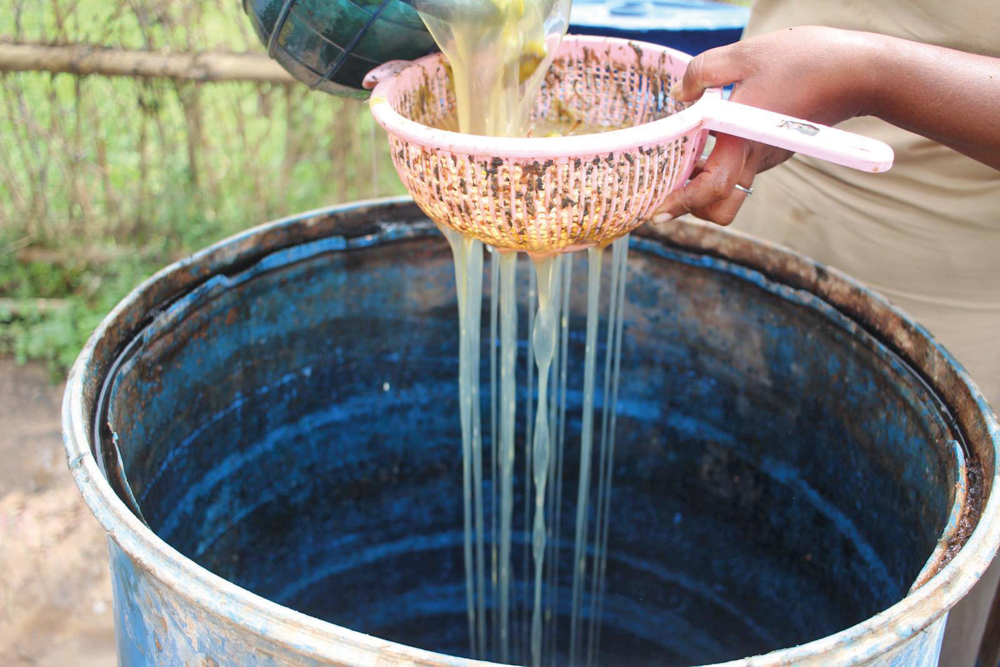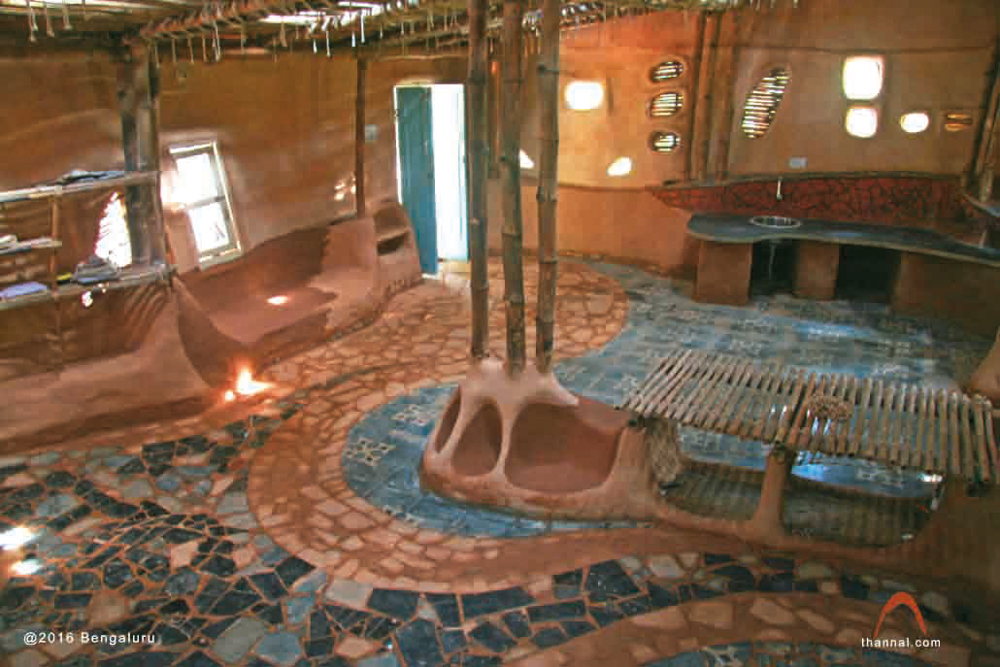Rice, before it is milled, is called "paddy" by English-speaking people in Asia. There are for practical purposes two sorts: rice that grows in water or "wet" rice, and "upland" rice. The latter grows on open hillsides, but only in places with a very high rainfall such as the Chin Hills of Burma. Ordinary, or wet rice is grown on a large scale in the United States and in southern Europe, and there is no doubt that its cultivation could be extended to more northern latitudes. It will grow and ripen in summer temperatures of over (min 20°C), but these must cover much of the four to five months that the crop takes to grow and ripen. The wheat-eating peoples of India have a strong sense of superiority over the rice-eaters and look upon rice as food fit only for invalids!
Sowing the paddy
The best way to grow rice on a small scale is to sow the seed broadcast on a dry seed bed when the ground has warmed up in the spring, rake it well in, and then flood the seed bed but only just. As the shoots grow, always try to keep the water level below the tops of the plants. Rice survives in water by virtue of its hollow stem, which takes oxygen down to the rest of the plant. When the plants are about eight inches (20 cm) tall pull them out in bunches and transplant them in to shallow standing water in an irrigated field. Simply dab each plant into the soft mud four inches (10 cm) away from its neighbours. Billions of paddy plants are planted like this every year
in India and China. Keep the paddy field flooded (never let it get dry) until about a fortnight before you judge the grain ripe enough to harvest. Then drain the field and let the grain ripen in the dry field.
Harvesting
Harvest with the sickle, thresh as you would, by passing through a plate mill or stone mill with the plates or stones open enough to hull the grain without cracking it, and you are left with "brown rice," that magical perfect food of the yin-yan adherents. It is in fact a good grain, very rich in starch but lower in protein and also in several other qualities than wheat. If you mill the brown rice more closely you get pearled rice, which is generally and wrongly called polished rice. This is
almost pure starch and a very incomplete foodstuff, even less nutritious than white wheat flour which is saying a lot. A further process, called polishing, produces true polished rice which is what most of us buy in the shops. If you live on practically nothing else but pearled or polished rice you get beri-beri. So the sensible thing to do, if you live on rice, is to eat brown rice and not go to the trouble of removing the Food from the Fields
Rice bran, which is the most nutritious part of it, and feeding it to the pigs.
Cooking rice
Unlike most other grains rice does not need grinding before it is cooked. The Western way to cook your own home-milled rice is to wash the grain well in cold water and strain, then bring 1 pint (0.6 litres) of water to the boil, add a teaspoonful of salt, and throw in 6 oz (170 g) of rice. Bring this to the boil
again and then allow it to simmer by reducing the heat. Cover the pan and simmer for fifteen minutes. When the
rice is tender, eat it. It will have absorbed all the water. Best to use the Indian method which is to bring much more water than you really need to the boil, throw the rice in, bring to the boil again, allow to simmer until the grain is tender (but not reduced to that horrible stuff: rice pudding!) which will be in about a quarter of an hour, strain the water out, toss the rice up a few times in the strainer, and eat it. Each grain will be separate if you do this properly and the rice will be perfect.
You can colour and flavour rice very nicely by tossing a pinch of saffron into the rice while it is cooking. For brown
rice, you need to allow forty to fifty minutes cooking time.
INDIAN RICE
Indian rice, can be harvested when it is ripe, and dried in hot sun or else "parched" by heating over a fire or kilning. This can be boiled or steamed and eaten, preferably with meat. It is very nutritious, but very laborious to harvest.
Coutesy : The complete book of Self sufficiency.
Images on farm will be updated soon.

















